

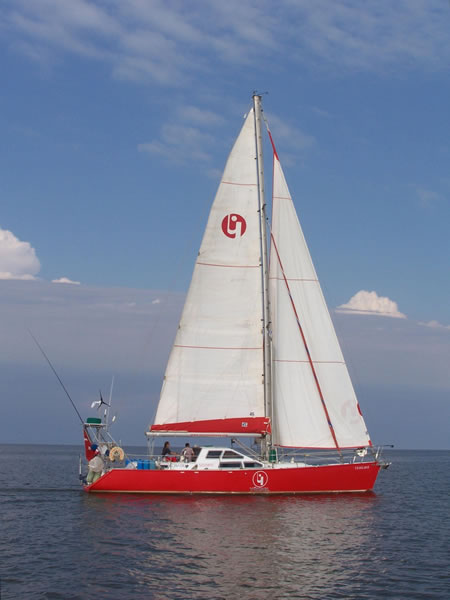
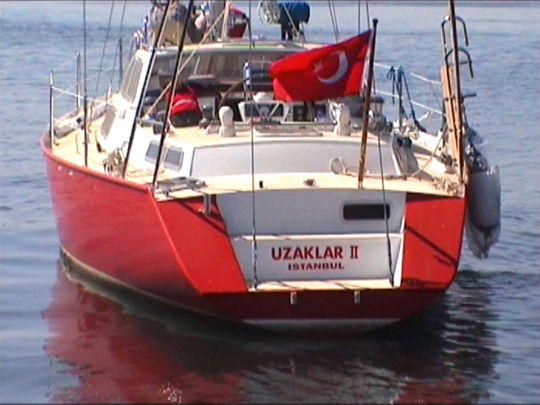
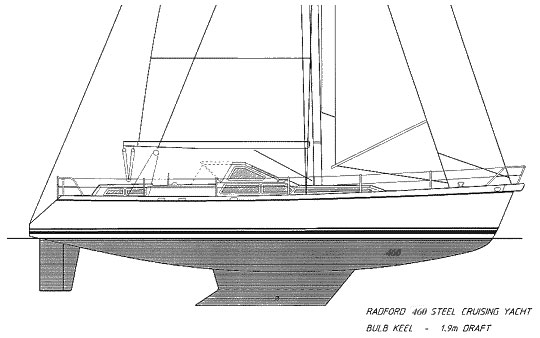
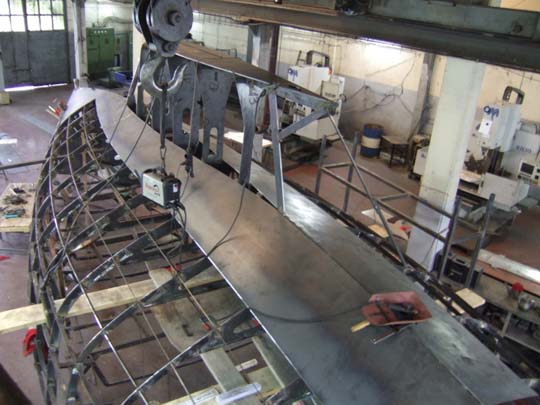
The R460 is a modified R450 - Design #13 and uses the latest in computer design and manufacturing technology to produce steel kits suitable for amateur or professional builders. The length has been increased by 300mm giving a larger boarding platform and better access to the aft deck. The kit components for the transom area have been improved and made easier to assemble.
The other major change is the addition of the 1.9m fabricated bulb keel. This is similar in style to the keel on the R415 - Design #61 and lowers the centre of gravity of the lead ballast by some 300mm which gives improved stability and performance over the keels originally designed for the R450.
The first R460 "Uzaklar II" was built in Turkey for Osman Atasoy. Follow his adventures.
The accommodation drawings give an indication of what will easily fit into the space available. As the accommodation does not contribute to the structural strength of the yacht it can be easily altered to suit the owner's requirements. Water tanks are in general located below the cabin sole leaving areas under the settees for gear stowage. The centre cockpit layout shows large saloons with wide settees and angled backrests. The galleys are also large with plenty of stowage. The forward vee berths can be converted to a double or, built as single upper and lower berths.
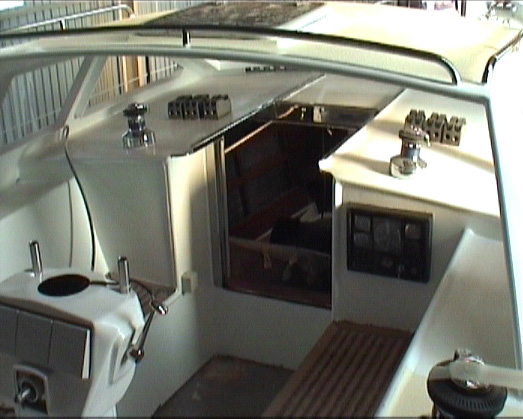
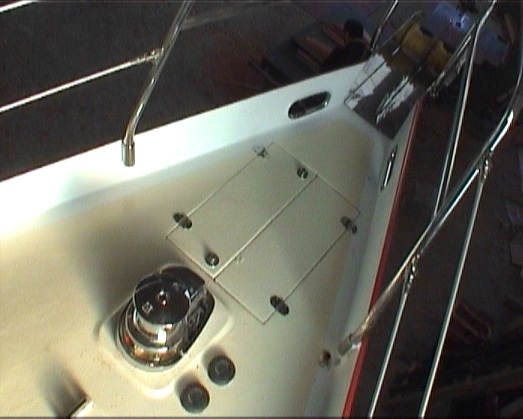
The centre cockpit layout has an optional port side lazarette. The boarding platform is incorporated into the transom and an anchor locker is forward of the collision bulkhead.
Permanently fitted companionway doors are specified. Fixed or soft dodgers, or a combination, are used for weather protection.
The R460 has very good volume and the carrying capacity required for a cruising yacht.
An effort should be made to build and load the yacht within the figures recommended. Overbuilding or adding any unnecessary weight during construction and fitout will detract from optimum loadings.

The hull structure is designed to the A.B.S. Guide for Offshore Racing Yachts and is basically the same for both layouts with only minor variations relating to the engine positions. Hull frames and floors are spaced at 650mm and regularly spaced 40 x 5mm stringers allow for the use of 4mm hull plating. The frames, backbone and keel base are cut from 8mm plate while the floors and keel plating are 5mm. The skeg, collision bulkhead, deck & house beams etc are 4mm; while the deck, house and cockpit plating are all 3mm. Total steel weight for the plates in the kit - including the hull plates, M.S. flatbar stringers, capping, tubes etc come to approximately 8.25T.
The combination of the rig and hull shape will ensure good sailing performance while the big accommodation space and the strength of the steel hull gives a safe, comfortable offshore cruising yacht.